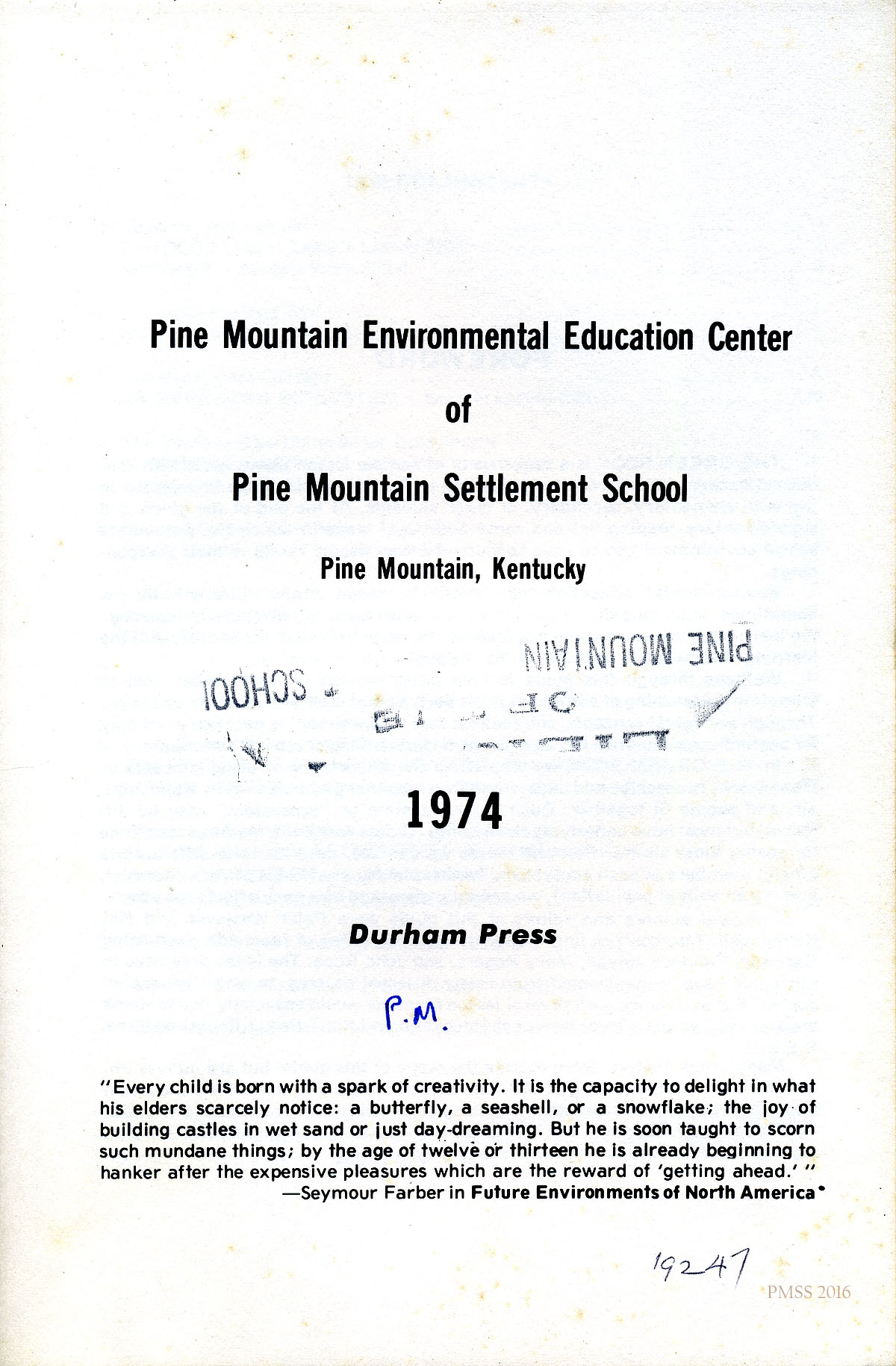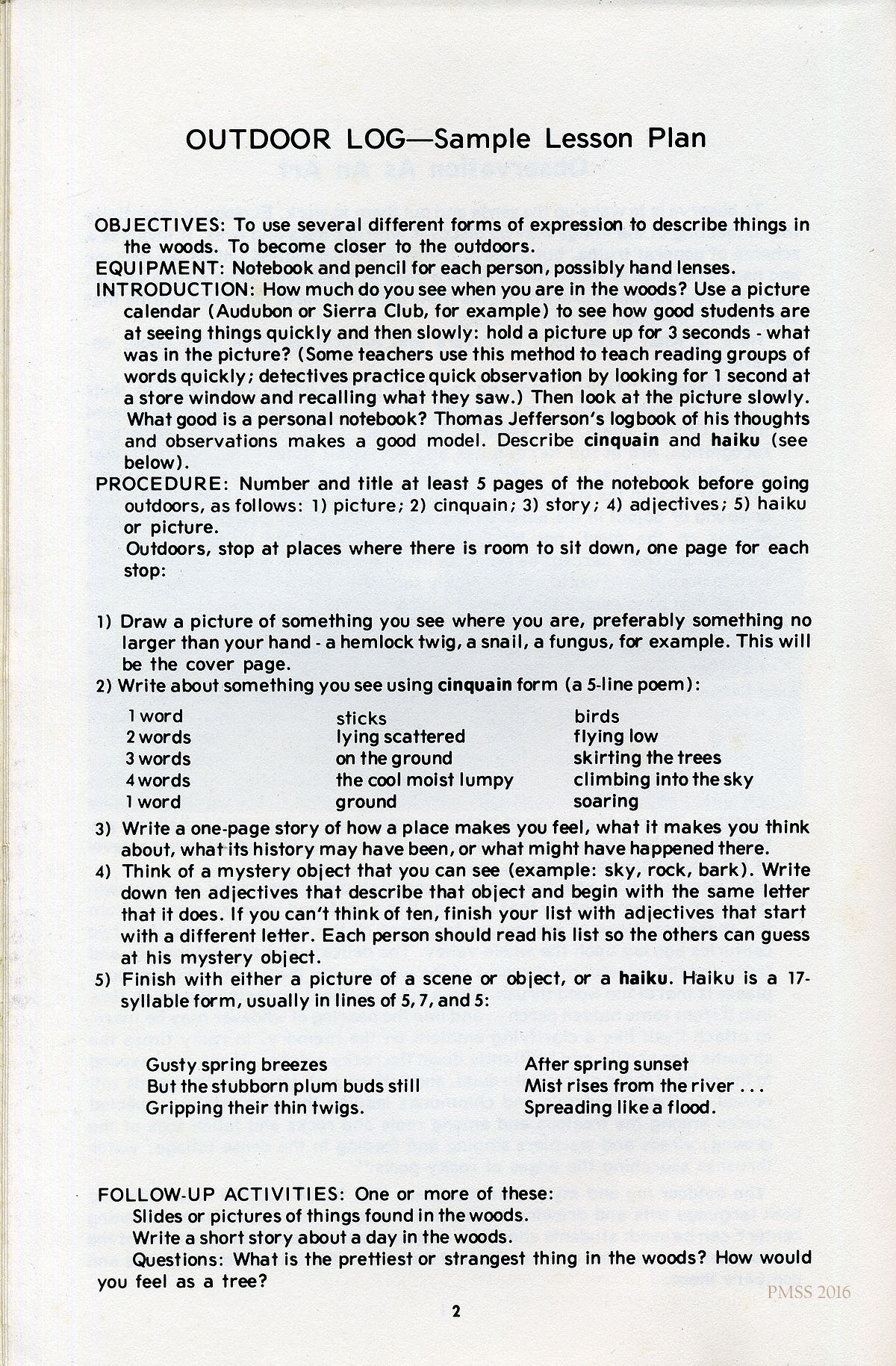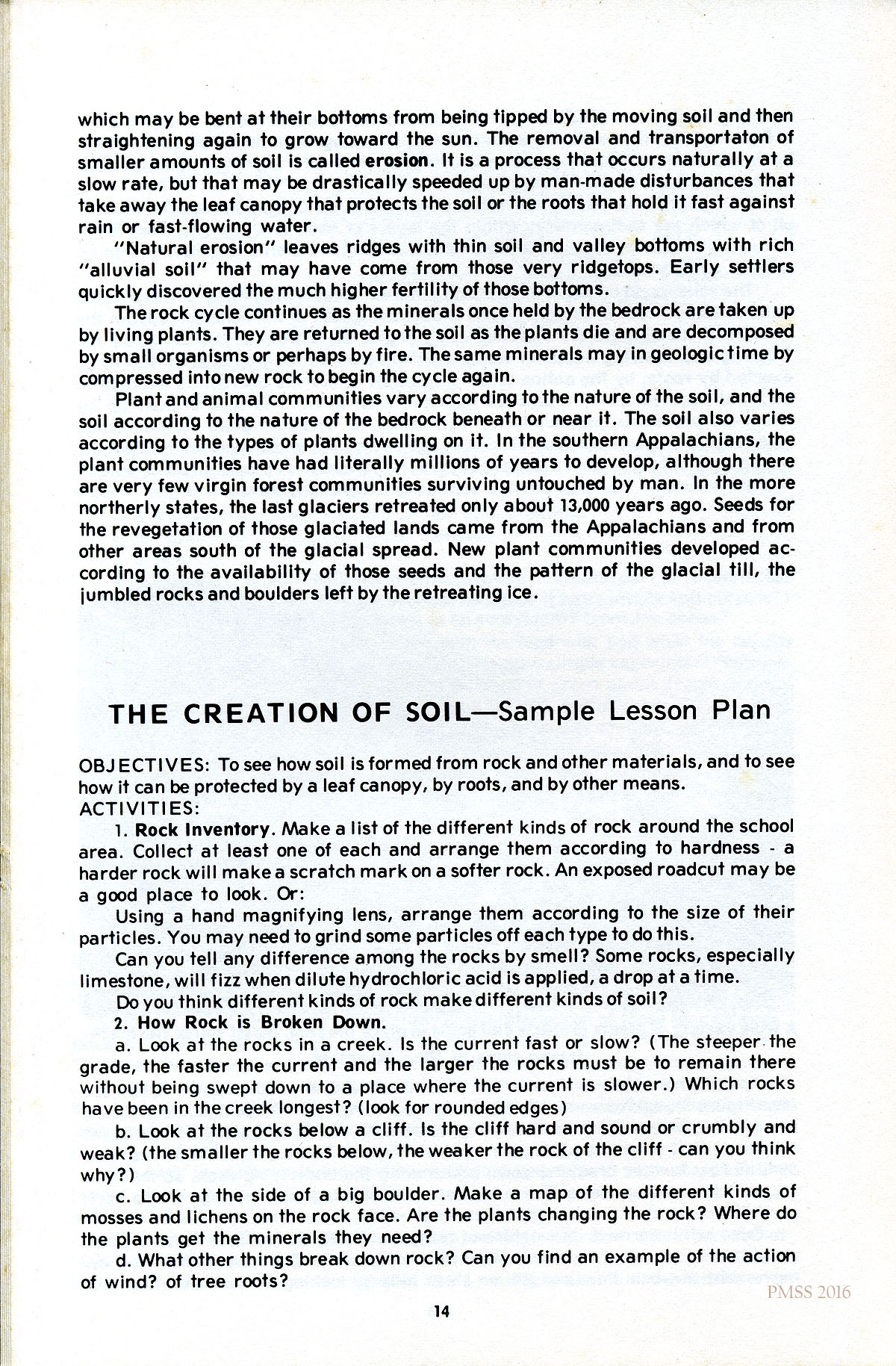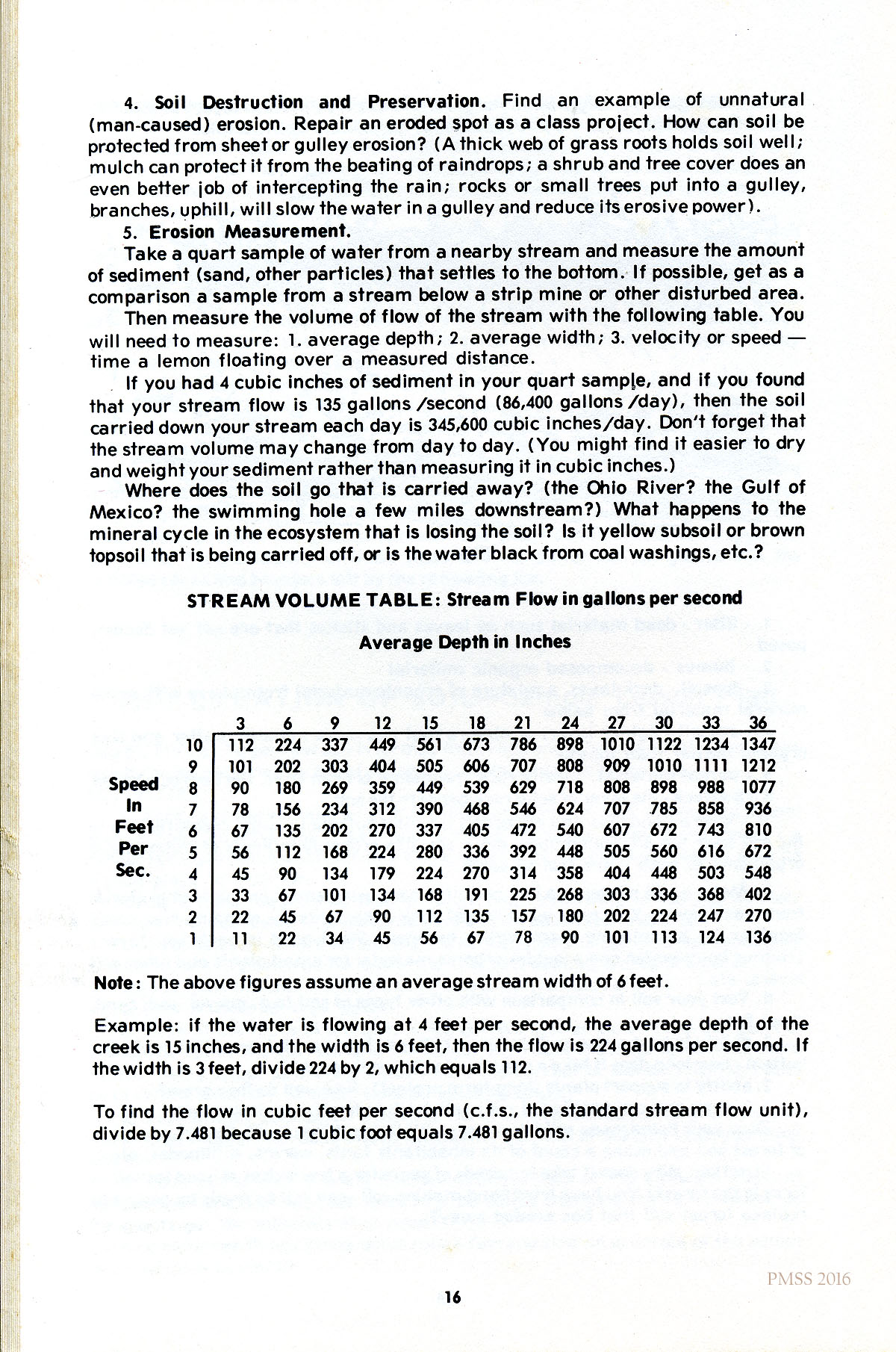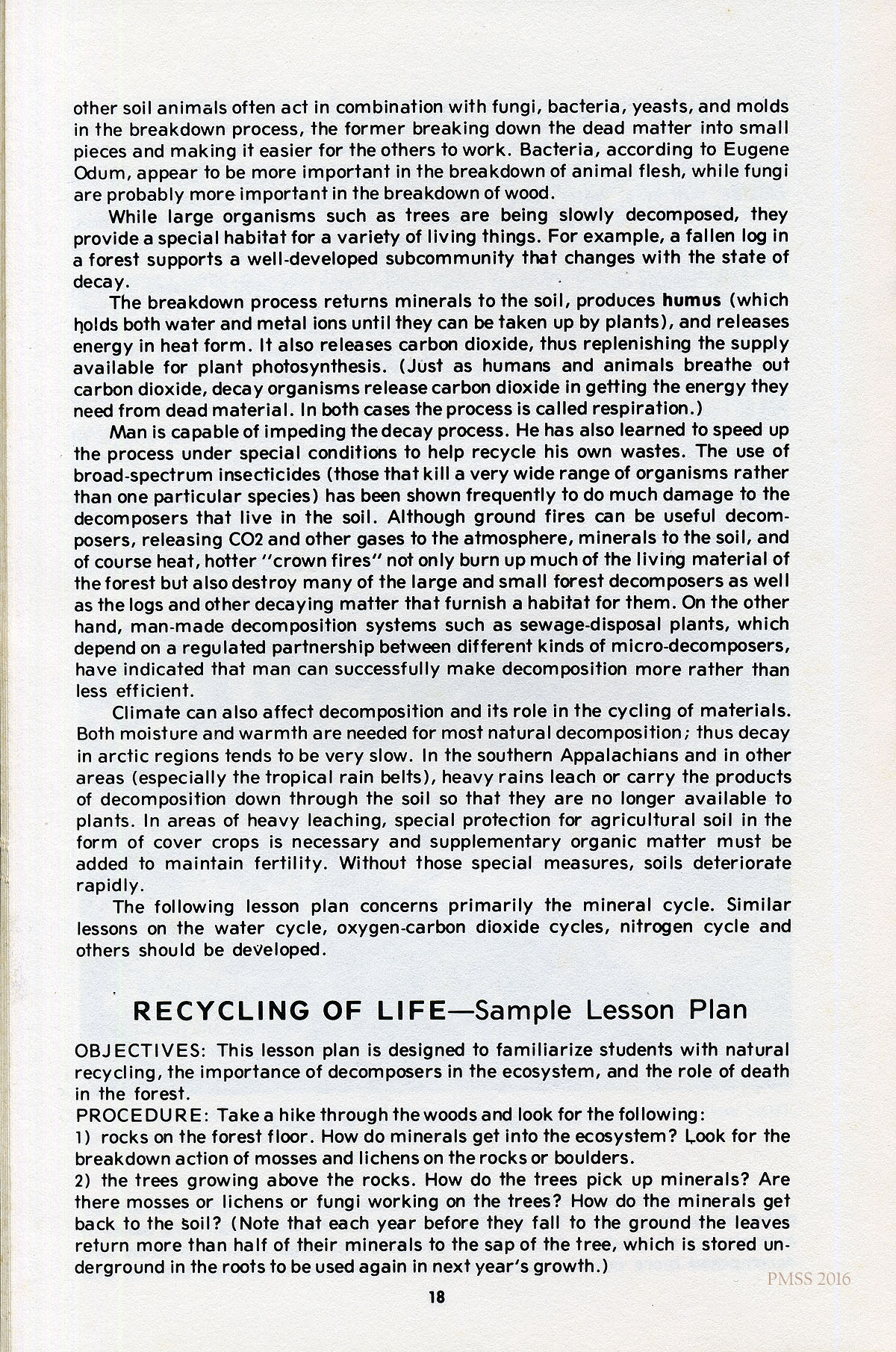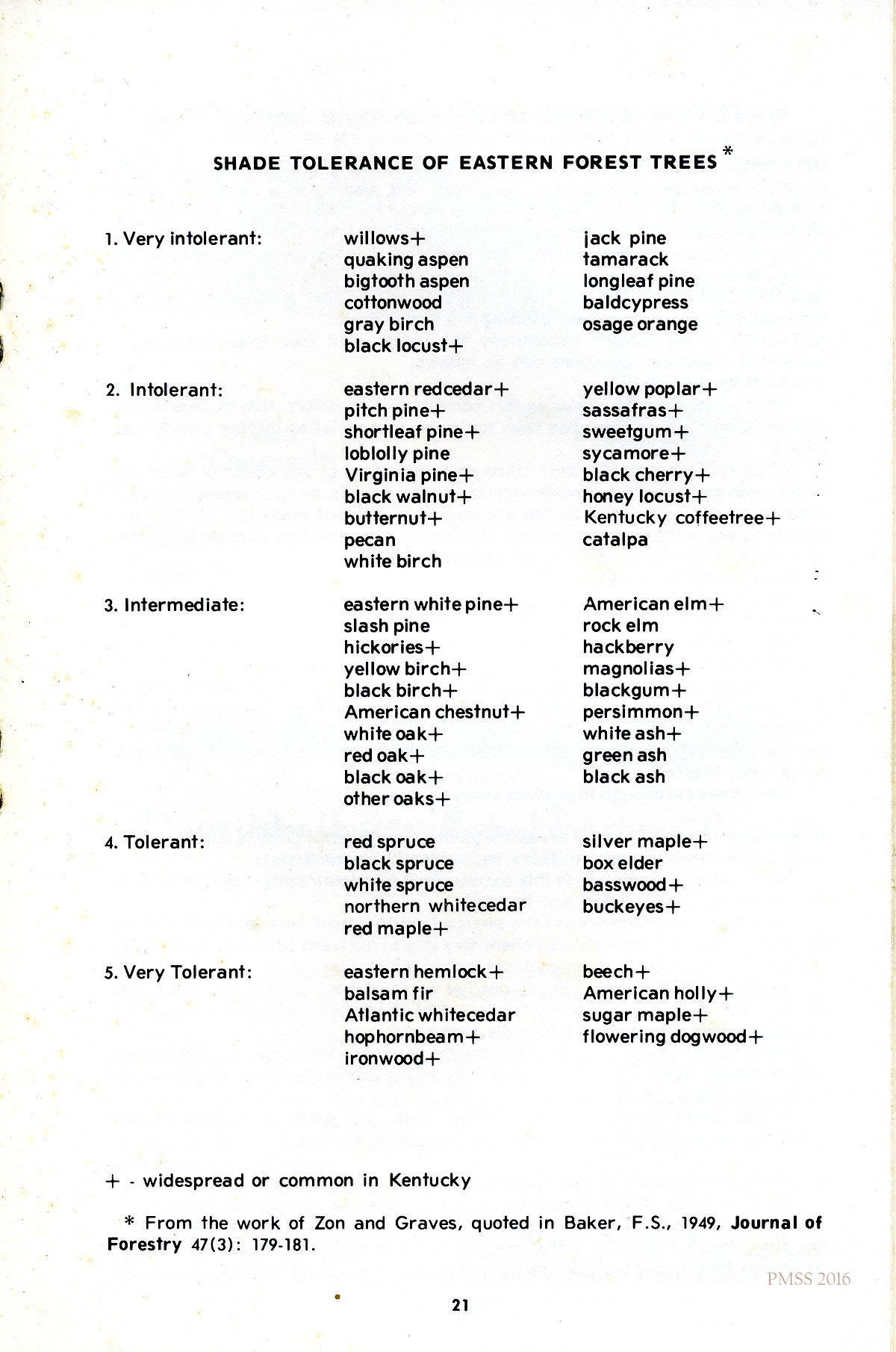Pine Mountain Settlement School
Series 17: PUBLICATIONS PMSS
Series 22: ENVIRONMENTAL EDUCATION
The Green Book 1974
Early Manual for EE Program

Stream Ecology class. Coleridge School. [picture-097.jpg]
ENVIRONMENTAL EDUCATION The Green Book 1974
Early Manual for EE Program
TAGS: Environmental Education, The Green Book 1974, EE Program manual, education, Afton Garrison, Candace Julyan, Mary Rogers, John Rupe, Peter Westover

“Green Book,” Cover. [ee_green_book_cover_2.jpg]
The GREEN BOOK, published in 1974, is a manual created by the core staff of the early Environmental Education (EE) program at Pine Mountain Settlement School. Using their combined experience this early staff were instrumental in establishing one of the first Environmental Education outdoor programs in the state of Kentucky at the Pine Mountain Settlement School.
The Forward to the manual, transcribed below, explains how the authors saw the basic purpose of the manual and the use of their lesson plans as fundamental to a growing awareness of the natural environment. Also shown below is the Table of Contents, an image of each page in The Green Book of 1974, and photographs of the program in action.
TRANSCRIPTION: Foreword
THE GREEN BOOK: Teaching Ecological Concepts Outdoors 1974
FOREWORD
THE GREEN BOOK is a sequence of 12 sample lesson plans, each with background information preceding it. The lesson plans can be adapted to use with elementary, secondary, and older students. At the end of the guide is a supplementary reading list and some additional ways in which the immediate school environment can be used to study the way people relate to their surroundings.
Environmental education has come to mean many different things. Sometimes, unfortunately, it has involved a separation of two kinds of learning: the learning of awareness and appreciation through the use of the senses; the learning of knowledge — specific truths — through experimentation.
We hope through this guide to help bring the two areas together and to stimulate the learning of additional skills such as that of effective communication. Through ecological concepts, one realizes that “awareness” is necessary not only for aesthetic appreciation but also for the understanding of concrete situations.
In THE GREEN BOOK we emphasize the importance of using concepts or frameworks, to understand the ways that plants, animals, water, soil, air, and people fit together. Each natural system “ecosystem” may be different, but most have underlying similarities. Unless we have a frame of reference for seeing those similarities, and unless we can see, describe, and differentiate among members of each ecosystem, (which plants, what kind of rock material, how big an animal population), we cannot understand how each affects the others.
Principal authors of this guide were Peter Westover and Nat Kuykendall. Also contributing to the writing and editing of the guide were Afton Garrison, Candace Julyan, Mary Rogers, and John Rupe. The ideas presented in this guide have been collected from many different sources, to whom we are indebted. Assistance with several lesson plans… we would especially like to thank the State of Kentucky Department of Education and the Title 111 Region 6 Office, E.S.E.A.
Many areas of study were outside the scope of this guide, but are no less important to an understanding of our total surroundings. Other Pine Mountain lesson plans and additional ideas for using local resources study, see Appendix I and Appendix ll.
This guide has not been copyrighted and we encourage others to use it or reprint it in any way.
TRANSCRIPTION: THE GREEN BOOK Table of Contents
| TABLE OF CONTENTS | ||
| 1 | Observation as an Art OUTDOOR LOG — Sample Lesson Plan MY TREE — Sample Work Sheet |
1 2 3 |
| 2 | Classification as a Tool MAKING A KEY — Sample Lesson Plan |
6 7 |
| 3 | The Ecosystem Concept AN AREA AS AN ECOSYSTEM — Sample Lesson Plan |
8 10 |
| 4 | The Earth as Raw Material for Ecosystems THE CREATION OF SOIL — Sample Lesson Plan Stream Volume Table for Measuring Sediment |
12 14 16 |
| 5 | Natural Cycles: What Makes Them Go? RECYCLING OF LIFE — Sample Lesson Plan |
17 18 |
| 6 | Natural Succession: Mechanics and Terminology Shade Tolerance of Eastern Forest Trees NATURAL SUCCESSION — Sample Lesson Plan |
19 21 22 |
| 7 | Populations: Ups and Downs POPULATION — Sample Lesson Plan |
27 29 |
| 8 | Adaptation: How Living Things Survive ADAPTATION TO CHANGING SEASONS — Sample Lesson Plan LIFE IN WINTER — Sample Lesson Plan |
31 33 34 |
| 9 | People and Ecosystems MAKING AN IMPACT STATEMENT — Sample Lesson Plan DIARY OF A CREEK — Sample Lesson Plan STRIP MINE REPORT — Sample Work Sheet |
35 36 38 39 |
| 10 | 30 Books — A Short Reading Guide for Teachers | 40 |
| Appendix I: Using School Areas for Study — Additional Suggestions | 41 | |
| Appendix II: Additional Pine Mountain Activities and Available Lesson Plans | 41 |
GALLERY: THE GREEN BOOK: Teaching Ecological Concepts Outdoors, 1974
GALLERY: Environmental Education Program
-

Environmental Education, 1970s. [Picture-124.jpg]
-

Environmental Education, 1970s. [Picture-007.jpg]
-

Environmental Education, 1970s. [Picture-102.jpg]
-

Environmental Education, 1970s. [Picture-069.jpg]
-

Environmental Education, 1970s. [Picture-033.jpg]
-

Environmental Education, 1970s. [Picture-001jpg]
Return To:
ENVIRONMENTAL EDUCATION Guide 1972 to present


